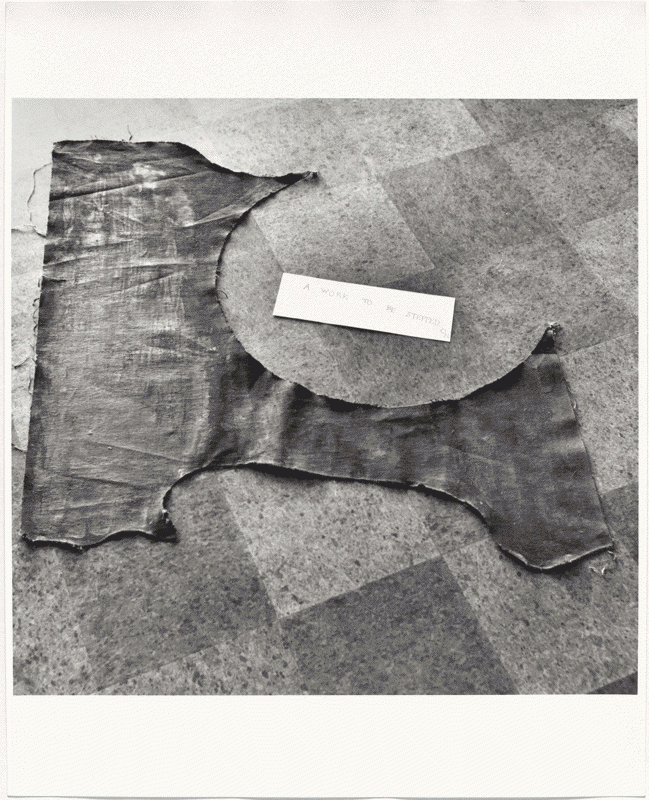Well before meeting John Lennon, Yoko Ono had developed a substantial career within a then emerging avant-garde. Born to a prominent family in prewar Tokyo, she moved to the . in 1953 and studied at Sarah Lawrence College in Westchester County, New York, before eloping with Toshi Ichiyanagi, a Japanese acolyte of John Cage. In late 1960 she hosted a performance programme with the musician La Monte Young in a rented loft downtown. Participants included Yvonne Rainer, Robert Morris, Steve Paxton and Simone Forti; Marcel Duchamp, Jasper Johns and Robert Rauschenberg were in the audience.
She presented her own work at Carnegie Recital Hall in New York, and in Tokyo (where she resided from 1962 to 64) at the innovative Sogetsu Art Center. During her time in Japan she also self-published Grapefruit (1964), a compendium of poetic instructions such as ‘Send a smell to the moon’ and ‘Draw a line until you disappear’, which she’d begun composing during the mid-1950s.
While installing a show at Indica Gallery in London during the fall of 1966 she met Lennon. They wed in 1969. Ono continued to work, for example publicising a faux retrospective at MOMA, the Museum of Modern (F)art (1971); performing in the pick-up Plastic Ono Band; and leveraging immense celebrity through collaborating with Lennon on happenings like the Bed–In (1969), a weeklong lie-in at the Amsterdam Hilton, which the pair repeated later in a Montreal hotel, to protest the war in Vietnam.
Much that Ono produced was ephemeral: performances, mimeographed instructions for pieces, cards with the texts from Grapefruit; much of it is lost, such as the series of paintings shown at George Maciunas’s AG Gallery in 1961, which included a canvas on the floor titled Painting to Be Stepped On (1960–61). Remakes of these are exhibited at MOMA. Other works seem slight, like a coin-operated dispenser of cards reading ‘sky’, which Ono proposed placing on street corners in lieu of Coke machines, though this work does reflect the truth that we need nature more than cola.
The physical manifestation of her pieces is, however, secondary. Speaking of her music, Ono said she intended it to induce a situation of self-awareness. Similarly, the enigmatic texts in Grapefruit, for example, play on the self and its limits while shifting agency to viewers who complete the work (or don’t) in their minds. More than reducing art to concepts, they elevate it to a potential awaiting realisation. This dynamic carries on in the WAR IS OVER! if you want it (1969–) slogan she continues to advertise in newspapers.
Ultimately the ethos of Ono’s work is social, and she is as interesting for it as for her network, the latter a natural extension of her appeal to public participation and her manipulation of fame. While the MOMA show deftly surveys her early career, relying heavily on films, printed matter and recordings, like most retrospectives it argues for the precedence of its subject, namely ‘Ono’ herself, a format antithetical to the inclusive core of her work and one which fails to elucidate the complex overlaps of influence and collaboration that make her emblematic of a multidisciplinary and transnational approach, one that both blurs the line between art and life and exploits the media equally as tool and platform.
This article was first published int he October 2015 issue.
